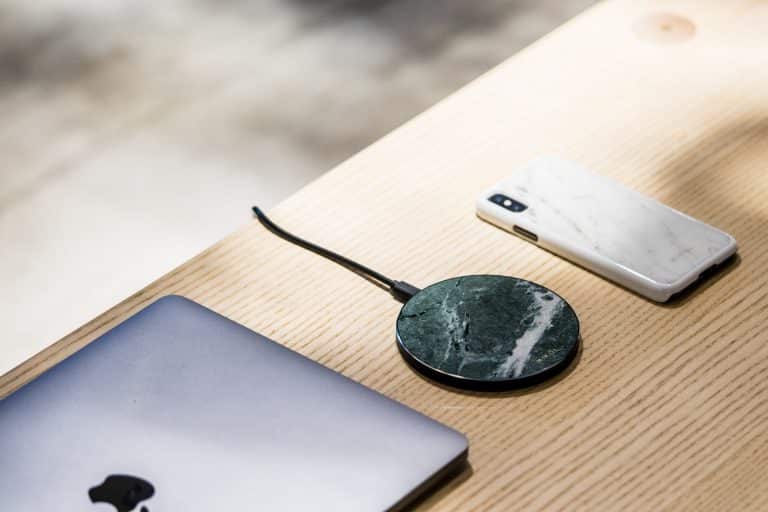Chargers that operate on wireless technology have been available for some time, especially in recent times. If you have a flagship smartphone that was introduced within the last three years, there is a good possibility that it is compatible with wireless charging technology. On every flagship smartphone, including the OnePlus 9 Pro and iPhone 12, this functionality is also available in some form.
Not only that but wireless charging is also utilized to power some wearable gadgets, as well as a few genuine wireless earbuds, among other things. To the point where you can even charge smaller gadgets wirelessly from the battery of your phone,
So let us go through what wireless charging is, how it works, and everything else you need to know about it in greater detail.
It is sufficient to just set a compatible smartphone on a wireless charging pad for the device to automatically begin charging. As a result of removing the need for wires, this may be incredibly handy.
If you have an iPhone or a Google Android smartphone, the standard is the same and is not reliant on the port located on the underside of your smartphone or tablet.
Before we go into detail about how wireless charging works, we should point out that there were two different charging protocols available when this concept first gained popularity.
Qi was a standard developed by the WPC (Wireless Power Consortium), and PMA (Power Matters Alliance) was a campaign to promote it. Inductive charging is used by both, but Qi has been extensively accepted by electronics makers and has become the de facto standard, so you don’t have to worry about compatibility.
So, How Wireless Charging works?
When a wireless charger and a gadget that can be wirelessly charged are close, electromagnetic induction is used to transport electricity wirelessly between them. One coil is located in the wireless charger, and another is located in the receiver, to make things easier to understand.
The following is what occurs when you place a smartphone that is capable of wireless charging on a wireless charging pad: The wireless charger gives out a signal from its coil, which is picked up by the receiver coil in the smartphone and used to charge the device. When this occurs, you will often notice an LED on the wireless charger illuminate or change color to indicate that it is charging.
A wireless charging pad is comprised of a coil, which is often composed of copper and is tightly wrapped to provide charging. This is the channel through which the electricity from the wireless charger is transferred. When a current is fed through the coil, it causes an alternating magnetic field to be generated in the coil. A copper coil receiver is used in a smartphone that is capable of wireless charging. This takes up the alternating magnetic field and produces a current, which is then transferred to the smartphone’s battery to charge it through the use of a power rectifier.
Wireless charging relies on the two coils being aligned for electricity to be sent, therefore the device’s positioning on the charging pad is critical to the process. For gadgets that can only be charged wirelessly, such as the Apple Watch Series 5 and the Samsung Galaxy Watch Active 2 4G, magnets are built into both the device and the wireless charger, which align and secure the device so that it may be charged without being tangled.
To provide greater coverage and to be able to charge more than one device at the same time, accessory makers have begun creating chargers with more than one coil. These wireless chargers are available in a variety of forms and sizes, and they are made of non-slip materials.
Both charging pads that lay flat on a table and support that allow the phone to sit at an angle so that the display can be read are available for purchase. Samsung and Google each offer wireless chargers for their own products, but because of the Qi standard, these chargers are also compatible with a wide range of other devices. It was also stated by Apple that it will release its own wireless charger, the AirPower, which was intended to be able to charge several devices at the same time, but it never made it to market.
When compared to utilizing a cable, wireless charging is more convenient, but it is also slower and less efficient. Another disadvantage of wireless charging is that it creates a lot of heat. As a result, manufacturers have shied away from developing fast wireless chargers that can compete with the plug-in ones that we are now using.
With the introduction of the AirVooC and Warp Charge 30 Wireless Charger standards, Oppo, Xiaomi, and OnePlus have all made significant strides in this area. The AirVooC charger was introduced with the Oppo Ace 2, whilst the OnePlus charger was introduced with the OnePlus 8 Pro.
These chargers include internal fans to keep them cool, and they will only operate at their maximum rates when used with devices that are compatible with the respective manufacturers.
And now it’s time to talk about wireless charging in reverse. The principle is quite similar to wireless charging, except that in this case, it is a smartphone that is using its own battery power to wirelessly charge another device instead of a charging pad.
It is possible to charge smaller devices such as wireless earbuds or an activity tracker using the smartphone’s coil, which serves as a transmitter. Reverse wireless charging is only supported by a small number of devices.
The Samsung Galaxy S10, Galaxy S20, and Galaxy Note 10 line of smartphones are some of the most popular in the market today. It is also sluggish and inefficient, therefore we recommend that you only use reverse wireless charging when it is necessary.

